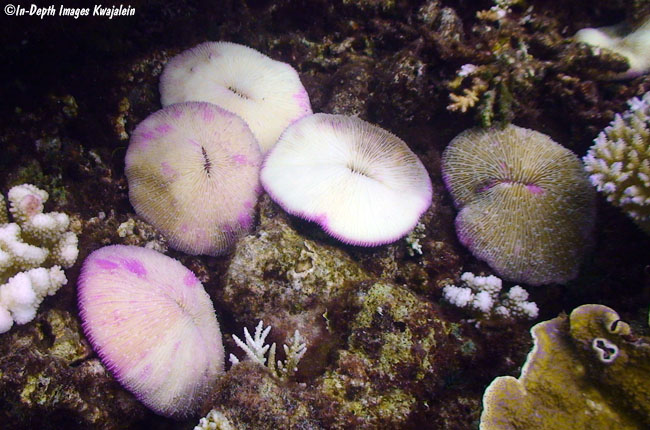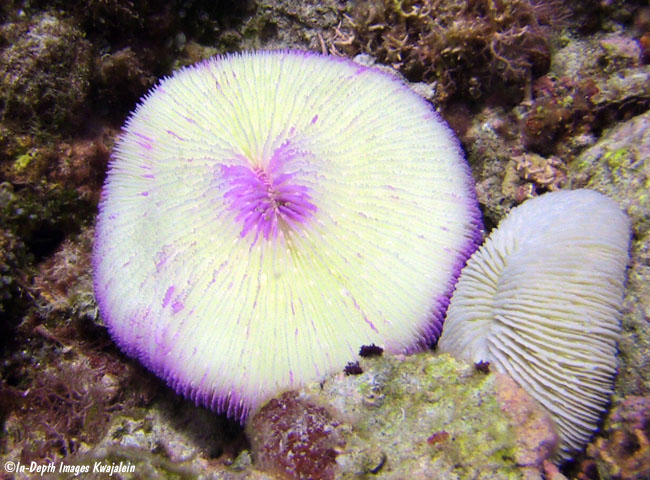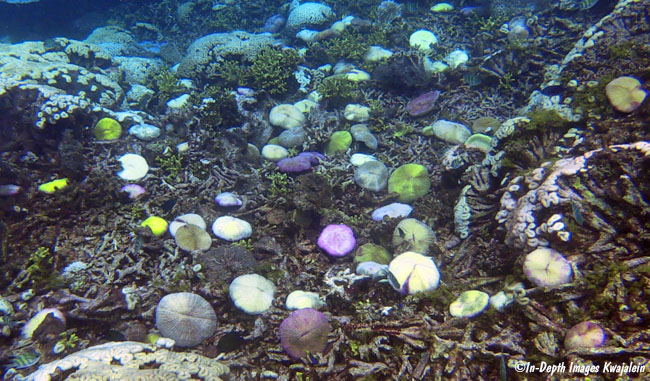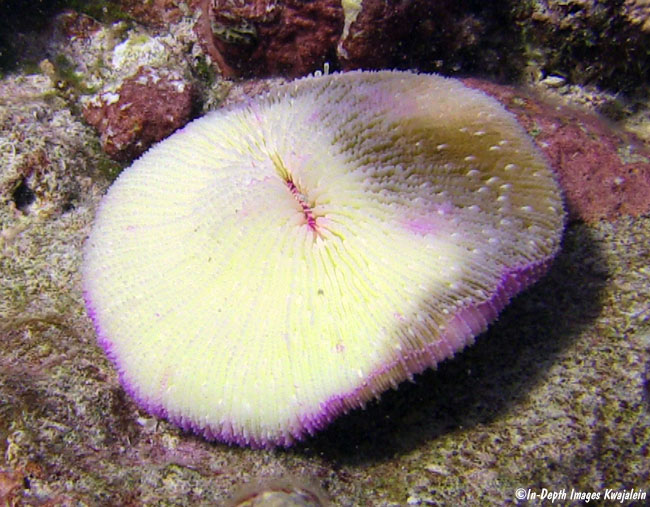
These appear to be Fungia fungites. This is one of the most abundant and variable Fungiids we see at Kwajalein, present in large numbers on shallow lagoon pinnacles and reefs. They are variable in color and shape and have pointed and sharp septal teeth on the sometimes sharp radial ridges (septae) that extend from near the center to the periphery of the polyp. Being loose on the bottom, like most Fungiids, these corals are often flipped upside down by large predatory fish (some large wrasses or triggerfish) who are looking for crabs and other invertebrates hiding beneath. Being upside down with the mouth facing the bottom, the coral would be less likely to feed on plankton or floating food, and the upper primary surface for photosynthesis by the symbiotic zooxanthellae is in the dark, possibly leading to starvation of the coral. I would often spend time on a dive flipping corals upright, so I was well aware of the sharp, pointed septal teeth.

The Fungia fungites at left is fully bleached. The more elongate species, probably Fungia cf paumotense, is light but still appears to have some color. Different species have different tolerance levels for warmer water, but it eventually gets them all sooner or later.

Most of the Fungiids on this pinnacle were bleached.

It turns out that sunlight also plays a part during bleaching episodes. We have noticed that parts of color colonies or Fungiid polyps in the shade do not bleach as quickly as those exposed to direct sunlight. The Fungiid below was being bleached, but the brown area to the right was shaded by another Fungiid lying on top of it. That seemed to protect the tissue there from the effects of warmer water. Very interesting, since we have seen many other examples during times when the water is not overly warm of parts of Fungiids bleaching because they ARE being shaded by other corals.

Created 10 April 2020
Close this tab when done